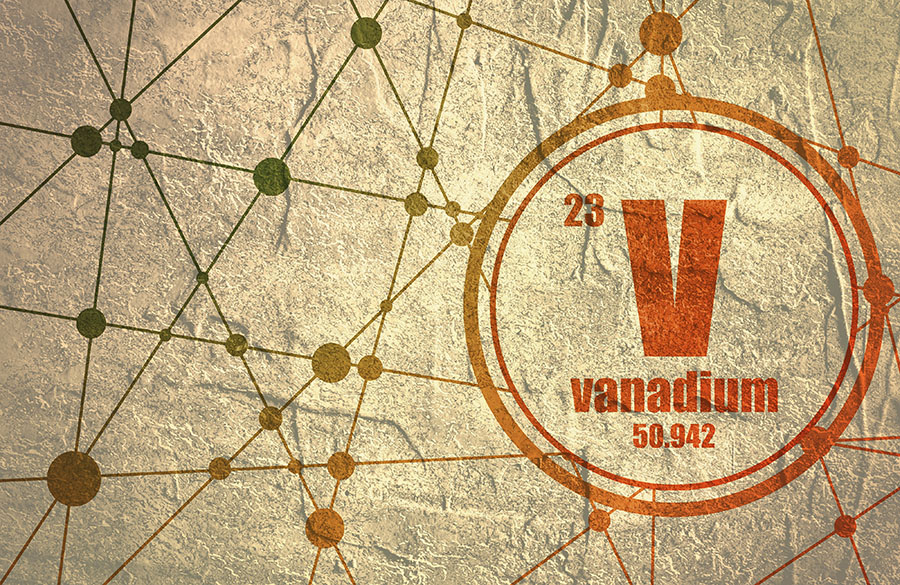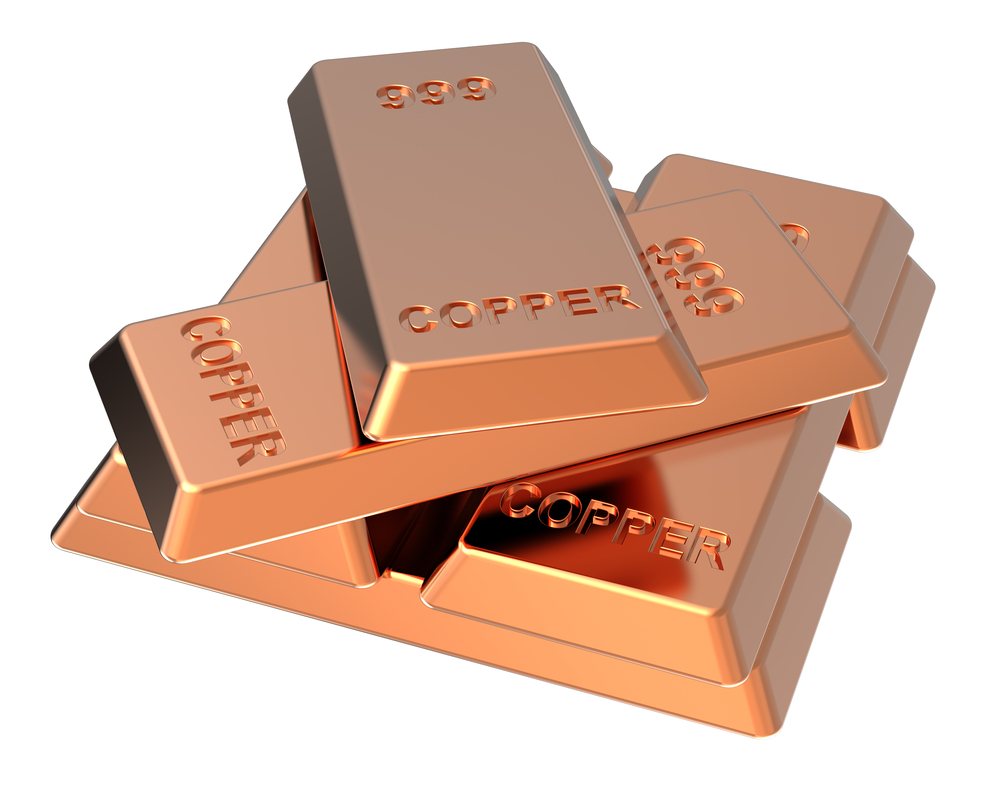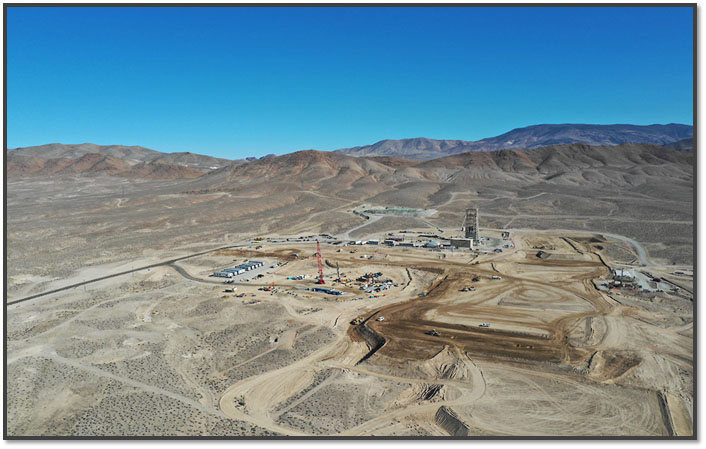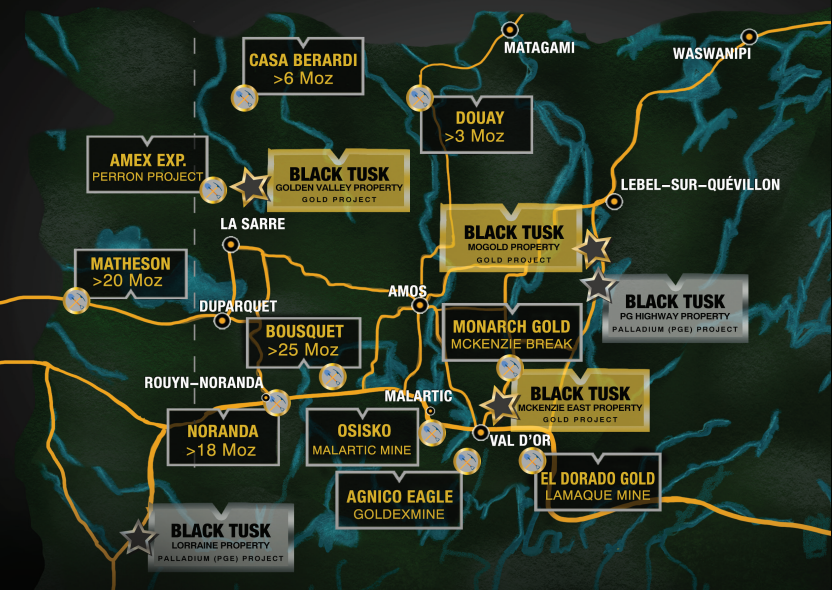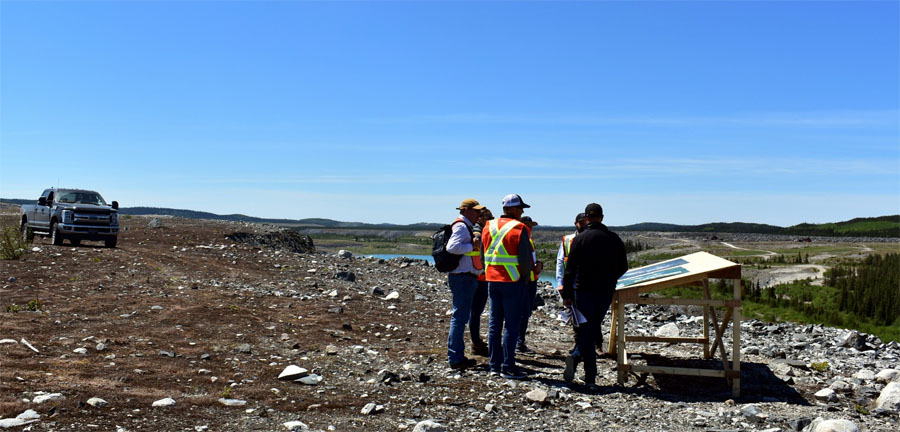First Vanadium Corp. (FVAN:TSX.V; FVANF:OTCQB) has been under pressure, along with hundreds of battery metal juniors and the underlying metals, including vanadium, cobalt and lithium. Even vanadium giant Largo Resources Ltd. (LGO:TSX) is down 61% from its 52-week high. Yet, if one believes in vanadium, it's hard to ignore First Vanadium’s shares at CA$0.44, down 78%! The pro forma enterprise value (market cap + debt – cash) is just US$12.8M. The company has CA$1.9M in cash.
Yet, even at current vanadium pentoxide (V2O5) prices, the in-situ value of the Indicated-only portion (303 million pounds) of the company's estimated resource is ~US$2.5 billion. Management believes it has the largest high-grade primary vanadium resource in North America.
There has been a lot of weeping and gnashing of teeth over the V2O5 (China) price falling from a 2019 high of US$17.6 to its current US$8.2 per pound. But, as the saying goes, the cure to low prices is. . .low prices. Few new projects make sense at today's levels. I believe that V2O5 (China) between US$10–US$15 per pound might be a sweet spot, good for both producers and end users.

Steel companies can afford to pay higher prices for V2O5, but grid-scale, vanadium redox flow battery (VRB) energy storage Systems (outside of China) might need prices below US$10/lb. to go mainstream. Importantly though, VRB plant costs are coming down. Vincent Sprenkle, a lead researcher at the U.S. Department of Energy’s Pacific Northwest National Laboratory (PNNL) recently said, "VRB costs could be lowered by another 50%."That would be very bullish for vanadium prices, it would allow for widespread adoption of VRBs even with V2O5 prices above US$10/lb.
First Vanadium has a sizable resource, a good grade, in a great jurisdiction. A preliminary economic assessment (PEA) is expected by year end. The following interview of Paul Cowley, P.Geo., president, CEO and director of First Vanadium, was conducted by phone and e-mail between June 24 and July 2.
Peter Epstein: Please tell us about yourself and your team.
Paul Cowley: I'm an exploration geologist with 40 years' experience in the discovery and evaluation of mineral deposits around the world. About half of my career was with a major, BHP Minerals. I was involved in leading the team in the Canadian Arctic that made four gold deposit discoveries that generated about 6 million ounces of gold. I also worked at Escondida and BHP’s Ekati diamond mineduring their exploration days.
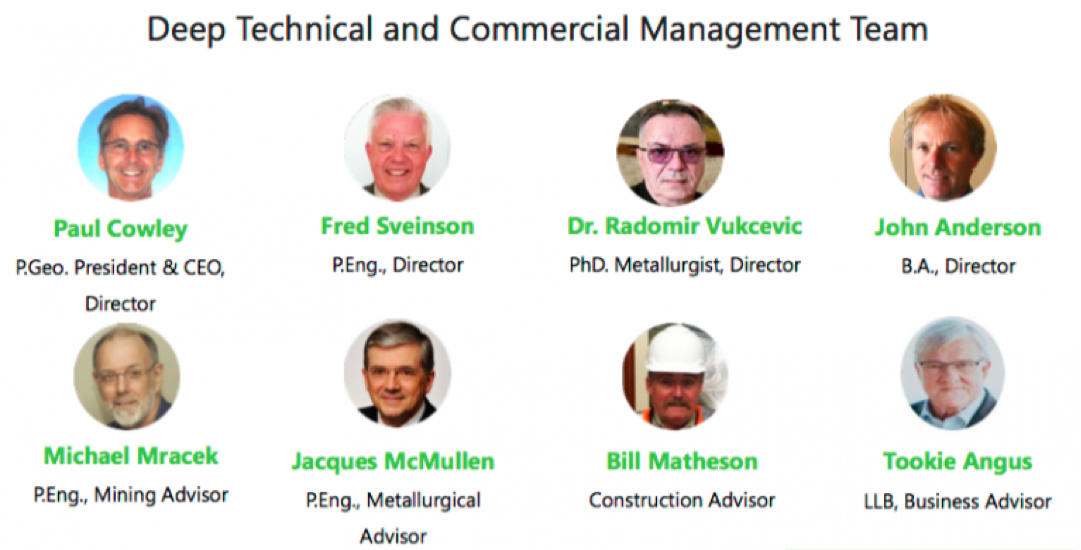
I'm a senior guy, but I'm the youngest of our group. The others have even more years of experience. We have two mining engineers that held mine general manager positions of very significant mines at majors. We have four metallurgists that have worked for majors in senior roles. We have a construction engineer who's built 20 mines in North and South America; he's currently building Lundin Gold Inc.'s (LUG:TSX) mine in Ecuador.
Peter Epstein: What do you make of the recent volatility in the vanadium price?
Paul Cowley: Since early March 2019 the vanadium price has taken an unexpected turn lower. Prices are not responding to the bigger picture demand and supply imbalance. Chinese steel plants did not recharge their vanadium inventories in this period, as many expected they would, putting pressure on traders to liquidate at undercutting prices, but they will have to restock. The U.S.-China trade wars, and some shortfall of enforcement of new Chinese rebar standards, appear to have exacerbated the situation in the short term.
It's our view that the fundamentals of demand in global steel applications will outstrip supply and should push vanadium prices higher again in the second half of the year, and beyond. Adding to the demand side is the exciting boom in solar and wind projects, all of which require battery storage. This is happening on so many levels around the world that we expect to see the vanadium battery carve out a healthy market share in this expanding renewable space. Some are calling the 2020s the Solar Decade.

Peter Epstein: Please explain the significance of the historical data you recently received, which extended the strike length by 300 meters to the south.
Paul Cowley: It means more potential than we had expected. From our drilling, the deposit appears to be open to expansion in several areas, but we did not expect the deposit to be open to the south. The newly acquired data demonstrates a 15% strike length increase to the south and it's still open in that direction. This is exciting news as this data was not included in the resource estimate we put out in February.
Peter Epstein: You already have a 303 million pound vanadium resource (in situ value of ~US$2.5 billion) in the Indicated category alone. Does the resource need to get any bigger?
Paul Cowley: That's a good question. But it needs to be answered through an economic study. In our view, the resource is sizable. It's currently the largest, highest-grade primary vanadium resource in North America. Our immediate priority is to demonstrate potential economic viability with what we have, knowing that we believe we could always make it bigger if and when we need to.

Peter Epstein: Some readers may assume that First Vanadium will need an expensive roaster in its operating flow sheet. What are your latest thoughts?
Paul Cowley: Not true. The path we are on with our metallurgical flow sheet does not include, or require, a roaster.
Peter Epstein: Although Nevada is the #1 global mining jurisdiction in the latest Fraser Institute Mining Survey, some complain that it takes a long time to get permits. What does your team expect in this regard?
Paul Cowley: In general, in the U.S. that is true, but not in Nevada. Nevada has a responsible review and process, but it's a mining state—and even more so for us, now that vanadium is on the critical minerals list. The U.S. has unveiled its strategy in an effort to rebuild struggling domestic supply chains for metals and minerals it deems "critical" to the country's manufacturing and defense sectors. Recently this was reiterated when President Trump and Prime Minister Trudeau announced a plan for the U.S. and Canada to collaborate on critical minerals.

Peter Epstein: What are the latest developments on the metallurgical front?
Paul Cowley: We continue to make strides on the metallurgical front. In April we announced an average of 95% vanadium extraction from the rock across the deposit, into solution. We do not know what ultimate recoveries will look like just yet, but we are making good progress. And we're making strides in the area of pre-concentration, with the aim to reduce the plant size, which would lower the capital intensity of the project.
Peter Epstein: What are First Vanadium's plans for a preliminary economic assessment (PEA)? Might that be a 1H 2020 event?
Paul Cowley: No, we think that we can move faster. Our aim is to initiate a PEA in the third quarter, with results to be reported before the end of the year.
Peter Epstein: Why should readers consider buying shares of First Vanadium?
Paul Cowley: I see very good value and upside; an exceptional senior technical team, a good share structure and a great project. We now have CA$1.9 million in cash with the recent private placement closing, and 42.4 million shares. Our share price now is where it was at the beginning of 2018! Yet, we have delivered two successful drill campaigns, a mineral resource with considerably higher grades, and more metal in the ground than our historical resource, and 80% (303 million pounds) of it is in the Indicated category.
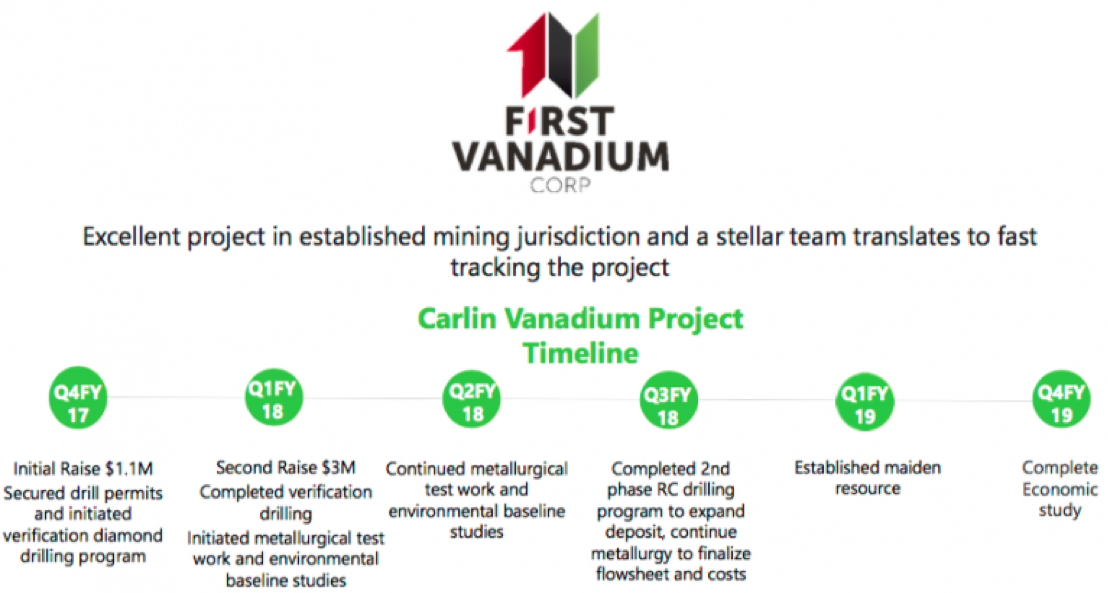
That, plus positive metallurgical test work and environmental baseline studies to advance permitting. If one is bullish on the vanadium price, currently at US$8.20/lb., then First Vanadium's project in the first-of-84-ranked global jurisdiction of Nevada should be high on the list of projects to consider investing in.
Peter Epstein: Thank you Paul, very interesting and timely commentary on the vanadium market and on First Vanadium. I look forward to seeing a PEA later this year!
Peter Epstein is the founder of Epstein Research. His background is in company and financial analysis. He holds an MBA degree in financial analysis from New York University's Stern School of Business.
[NLINSERT]Disclosures: The content of this interview is for information only. Readers fully understand and agree that nothing contained herein, written by Peter Epstein of Epstein Research [ER], (together, [ER]) about First Vanadium Corp., including, but not limited to, commentary, opinions, views, assumptions, reported facts, calculations, etc. is not to be considered implicit or explicit investment advice. Nothing contained herein is a recommendation or solicitation to buy or sell any security. [ER] is not responsible under any circumstances for investment actions taken by the reader. [ER] has never been, and is not currently, a registered or licensed financial advisor or broker/dealer, investment advisor, stockbroker, trader, money manager, compliance or legal officer, and does not perform market making activities. [ER] is not directly employed by any company, group, organization, party or person. The shares of First Vanadium Corp. are highly speculative, not suitable for all investors. Readers understand and agree that investments in small cap stocks can result in a 100% loss of invested funds. It is assumed and agreed upon by readers that they will consult with their own licensed or registered financial advisors before making any investment decisions. At the time this article was posted, Peter Epstein owned no shares of First Vanadium Corp. and the company was an advertiser on [ER]. Readers understand and agree that they must conduct their own due diligence above and beyond reading this article. While the author believes he’s diligent in screening out companies that, for any reasons, are unattractive investment opportunities, he cannot guarantee that his efforts will (or have been) successful. [ER] is not responsible for any perceived, or actual, errors including, but not limited to, commentary, opinions, views, assumptions, reported facts, financial calculations, etc., or for the completeness of this interview or future content. [ER] is not expected or required to subsequently follow or cover events & news, or write about any particular company. [ER] is not an expert in any company, industry sector or investment topic.
Streetwise Reports Disclosure:
1) Peter Epstein's disclosures are listed above.
2) The following companies mentioned in the article are billboard sponsors of Streetwise Reports: None. Click here for important disclosures about sponsor fees. The information provided above is for informational purposes only and is not a recommendation to buy or sell any security.
3) Statements and opinions expressed are the opinions of the author and not of Streetwise Reports or its officers. The author is wholly responsible for the validity of the statements. The author was not paid by Streetwise Reports for this article. Streetwise Reports was not paid by the author to publish or syndicate this article. Streetwise Reports requires contributing authors to disclose any shareholdings in, or economic relationships with, companies that they write about. Streetwise Reports relies upon the authors to accurately provide this information and Streetwise Reports has no means of verifying its accuracy.
4) The article does not constitute investment advice. Each reader is encouraged to consult with his or her individual financial professional and any action a reader takes as a result of information presented here is his or her own responsibility. By opening this page, each reader accepts and agrees to Streetwise Reports' terms of use and full legal disclaimer. This article is not a solicitation for investment. Streetwise Reports does not render general or specific investment advice and the information on Streetwise Reports should not be considered a recommendation to buy or sell any security. Streetwise Reports does not endorse or recommend the business, products, services or securities of any company mentioned on Streetwise Reports.
5) From time to time, Streetwise Reports LLC and its directors, officers, employees or members of their families, as well as persons interviewed for articles and interviews on the site, may have a long or short position in securities mentioned. Directors, officers, employees or members of their immediate families are prohibited from making purchases and/or sales of those securities in the open market or otherwise from the time of the interview or the decision to write an article until three business days after the publication of the interview or article. The foregoing prohibition does not apply to articles that in substance only restate previously published company releases.
Graphics provided by the author.



